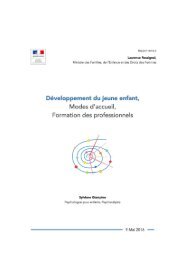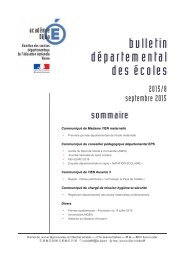agrl_innovations_in_ssa.pdf?utm_content=buffercb41d&utm_medium=social&utm_source=twitter
agrl_innovations_in_ssa.pdf?utm_content=buffercb41d&utm_medium=social&utm_source=twitter
agrl_innovations_in_ssa.pdf?utm_content=buffercb41d&utm_medium=social&utm_source=twitter
You also want an ePaper? Increase the reach of your titles
YUMPU automatically turns print PDFs into web optimized ePapers that Google loves.
and <strong>in</strong>formation transfer. Facilitation can help to build work<strong>in</strong>g relationships, <strong>in</strong>volv<strong>in</strong>g partners<br />
<strong>in</strong> private–public alliances that will stimulate <strong>in</strong>novation.<br />
The implications for accelerat<strong>in</strong>g agricultural development <strong>in</strong> SSA are that:<br />
• Support for agricultural research requires <strong>in</strong>creased focus on the <strong>in</strong>terface with the rest of<br />
the sector and <strong>in</strong> particular develop<strong>in</strong>g l<strong>in</strong>ks from the beg<strong>in</strong>n<strong>in</strong>g <strong>in</strong> a way that encourages<br />
<strong>in</strong>teractions between public, private and civil society organisations. This necessitates<br />
support for service providers who are able to facilitate engagement between partners to<br />
create the trust, cooperation and common vision required for <strong>in</strong>novation.<br />
• Support should be provided to encourage <strong>in</strong>stitutional cooperation, jo<strong>in</strong>t plann<strong>in</strong>g,<br />
implementation, analysis and learn<strong>in</strong>g processes rather than more traditional technologyorientated<br />
research undertaken <strong>in</strong> isolation from other stakeholders. This requires that<br />
research expertise <strong>in</strong>cludes a wide knowledge of markets, agri-bus<strong>in</strong>ess and rural f<strong>in</strong>ance<br />
that can compliment specialist technical expertise.<br />
• IAR4D and <strong>in</strong>novation systems approaches are complementary to the AU and NEPAD’s<br />
CAADP country process. An IP comb<strong>in</strong>es all the elements of the four CAADP pillars that<br />
can enable faster <strong>in</strong>novation and agricultural development. FARA should consider offer<strong>in</strong>g<br />
to provide a facilitat<strong>in</strong>g role <strong>in</strong> promot<strong>in</strong>g the advances made by the use of IAR4D with<strong>in</strong><br />
CAADP Pillar 4, thereby help<strong>in</strong>g country CAADP processes to <strong>in</strong>stitutionalise the use of<br />
<strong>in</strong>novation systems approaches.<br />
104 Agricultural Innovation <strong>in</strong> Sub-Saharan Africa






